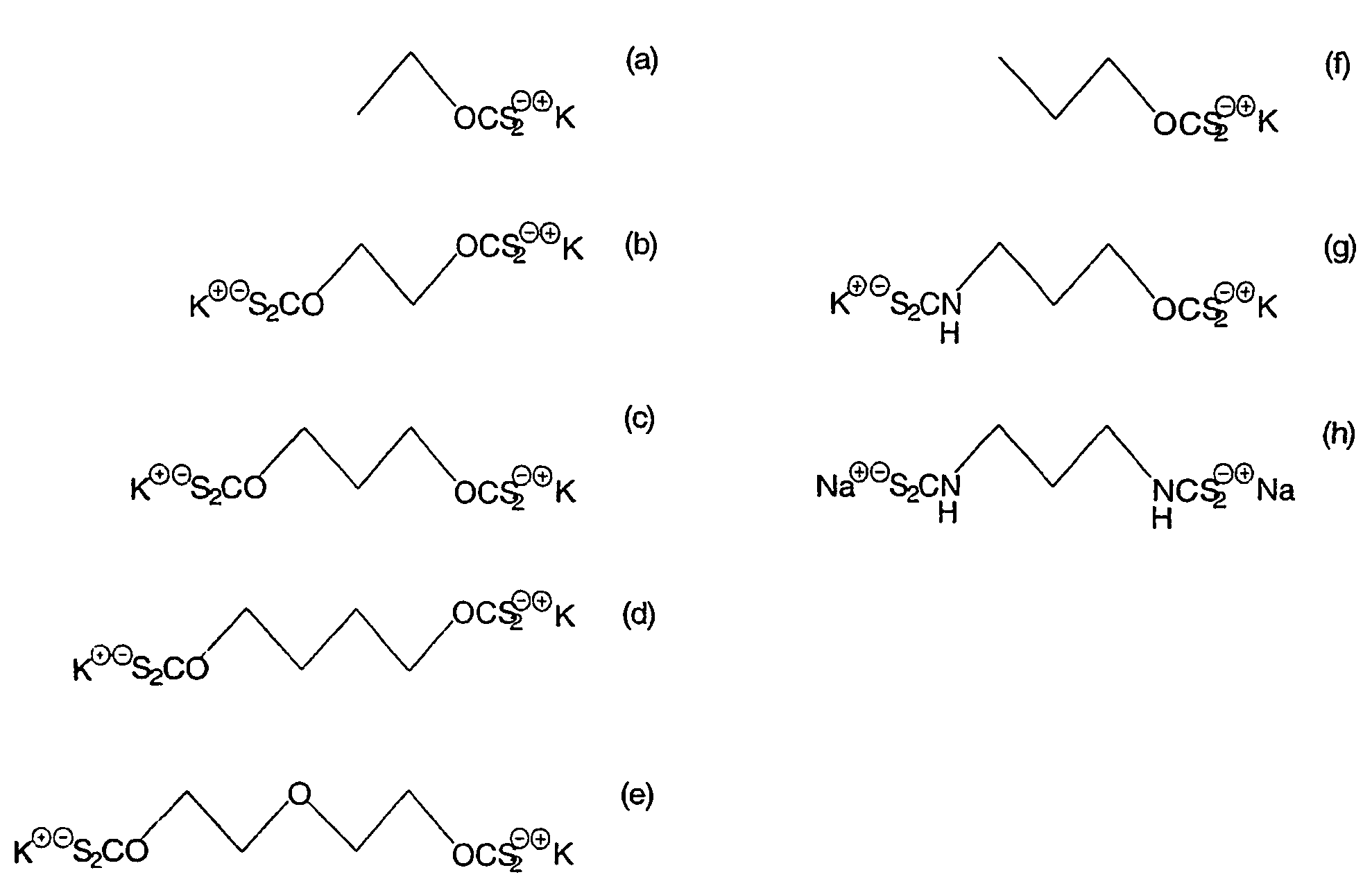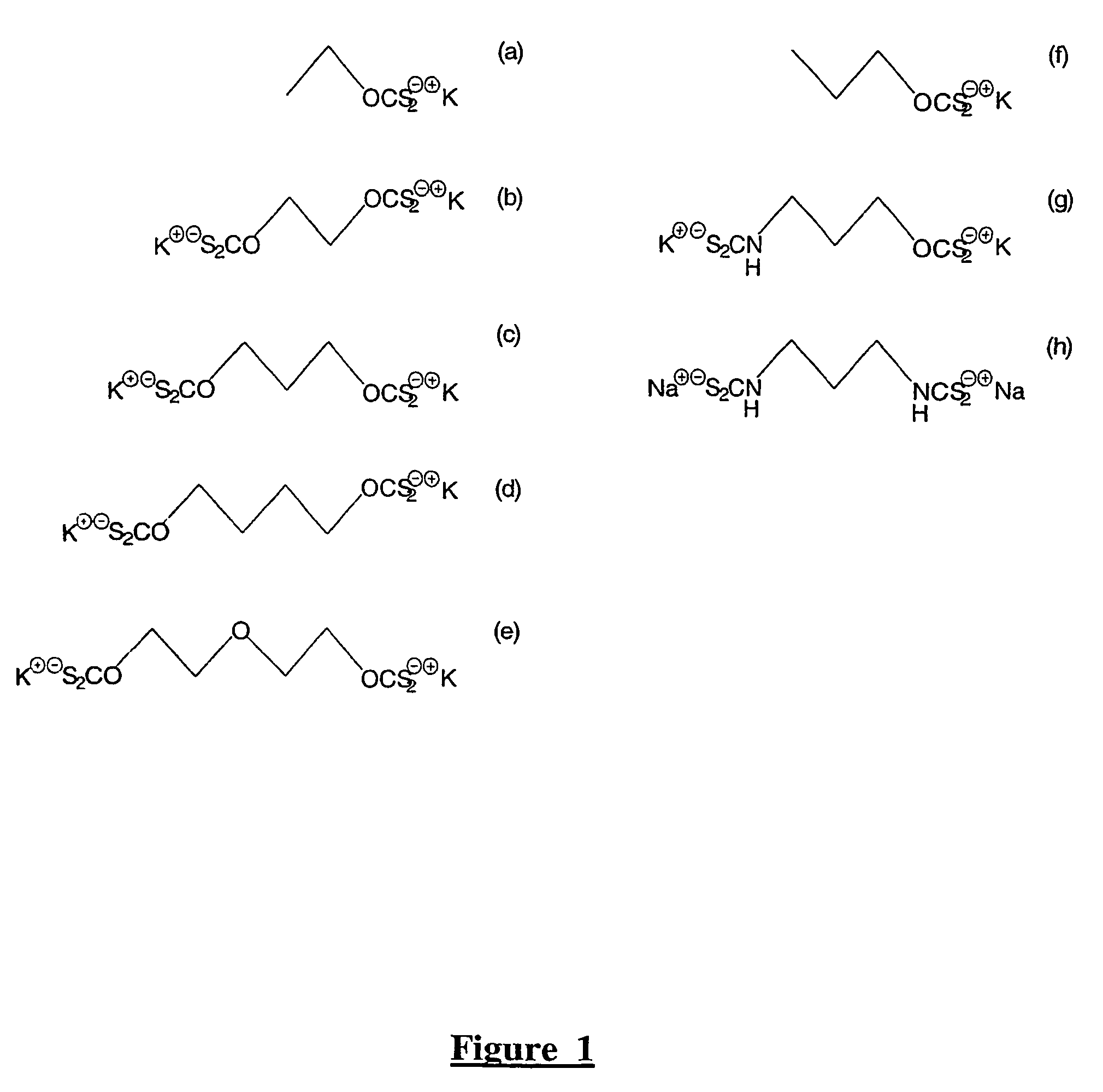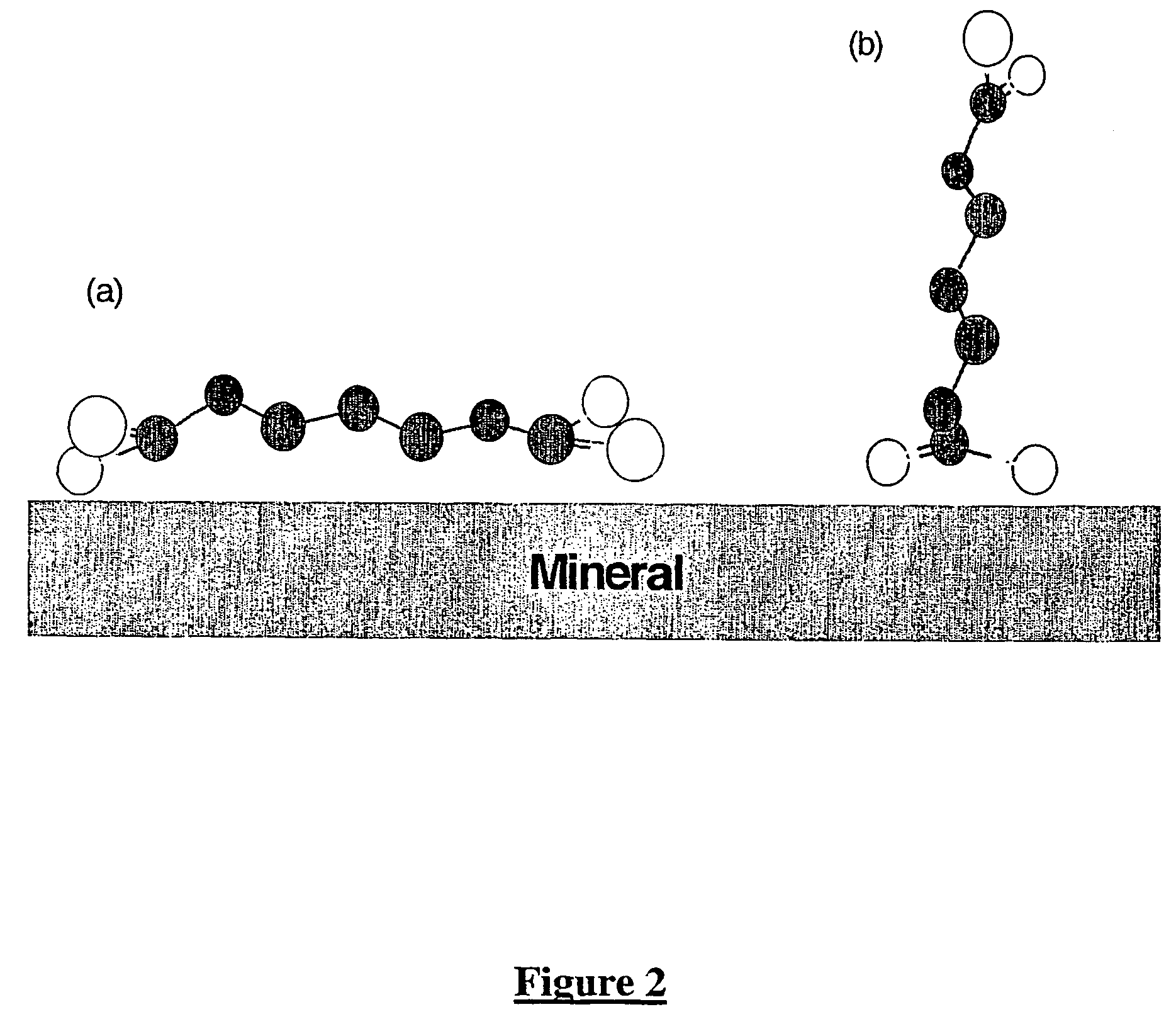Selective recovery of minerals by flotation
a technology of mineral recovery and flotation, which is applied in the direction of flotation, solid separation, etc., can solve the problems of low grade, complex and difficult dissemination of ore reserves, and achieve the effect of raising pulp potential
- Summary
- Abstract
- Description
- Claims
- Application Information
AI Technical Summary
Benefits of technology
Problems solved by technology
Method used
Image
Examples
example 1
Ore A
[0067]The head assay of this Australian nickel sulphide ore is 3.89% Ni, 16.85% Fe, 10.42% S, 0.29% Cu, and 8.66% MgO. Nickel was predominantly present as pentlandite ((Ni,Fe)9S8), the copper was present as chalcopyrite (CuFeS2) and the principle sulphide gangue comprised pyrrhotite (Fe1−xS) and pyrite (FeS2), predominantly pyrrhotite. Therefore, the ore contained 5.70% iron sulphides (IS).
[0068]The following general preparation and flotation procedure for Ore A was used:
[0069]Ore A was crushed to pass 1.65 mm, blended and divided in 1000 g lots by standard means. The nickel ore charge (1000 g) was mixed with Melbourne tap water (0.5 L) and lime (0.5 g) and ground in a laboratory mild steel rod mill containing mild steel rods for 30 minutes at 67 wt % solids to give a P80 (80% passing size) by weight of 74 μm. At this size the nickel was expected to be well liberated. Sufficient lime was added to the grinding mill to give a pulp pH of approximately 9 when the ground pulp was pl...
example 2
Ore B
[0082]The head assay of this Australian copper sulphide ore is 1.14% Cu, 25.48% Fe and 5.91% S. Chalcopyrite was the only copper mineral present and the iron sulphide gangue was present as pyrite. Therefore, the ore contained 4.75% pyrite.
[0083]The following general preparation and flotation procedure for Ore B was used:
[0084]Ore B was crushed to −2 mm, blended and divided in 1000 g lots by standard means. The copper ore charge (1000 g) was mixed with Melbourne tap water and ground in a laboratory mild steel ball mill containing mild steel balls for 30 minutes at 67 wt % solids to give a Pso (80% passing size) by weight of approximately 80 μm. The ground pulp sample was transferred to a modified 3 L Denver stainless steel cell and the volume of the pulp adjusted by adding Melbourne tap water to give a pulp density of about 26 wt % solids. The pulp was agitated at 1200 r.p.m.
[0085]The pH of the ground pulp in the cell was approximately 9.0. Lime (250 g / t) was added to the pulp t...
PUM
| Property | Measurement | Unit |
|---|---|---|
| passing size | aaaaa | aaaaa |
| passing size | aaaaa | aaaaa |
| pH | aaaaa | aaaaa |
Abstract
Description
Claims
Application Information
 Login to View More
Login to View More - R&D
- Intellectual Property
- Life Sciences
- Materials
- Tech Scout
- Unparalleled Data Quality
- Higher Quality Content
- 60% Fewer Hallucinations
Browse by: Latest US Patents, China's latest patents, Technical Efficacy Thesaurus, Application Domain, Technology Topic, Popular Technical Reports.
© 2025 PatSnap. All rights reserved.Legal|Privacy policy|Modern Slavery Act Transparency Statement|Sitemap|About US| Contact US: help@patsnap.com



